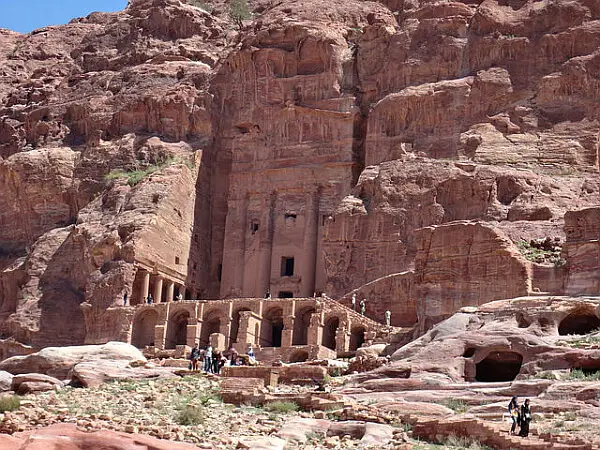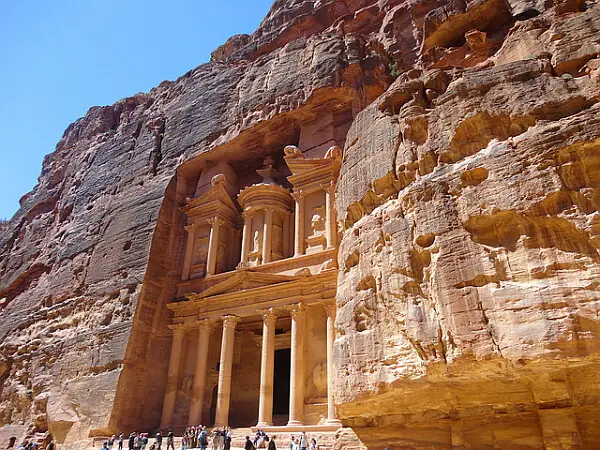Nomadic Voices in the Kingdom of Jordan
Story and photos by David Lee Drotar
Touring the greatest hits of Jordan has gotten more complicated as the Bedouins evolve and refugees stream in from Syria.

In a corner of the Mideast where danger hides in many places, I left my clothes at the Syrian border. I wasn’t running from hostilities, however, nor was I swimming. Although I couldn’t have predicted my strange actions at the outset of my trip to Jordan, my path now seemed as inevitable as the ramblings of the Sinai rosefinch or the Bedouins in the desert.
My journey began with a contrived plot—pre-packaged photo ops and adventure-to-go designed for safety. But soon the tale would go off script.
“The tourism industry is fragile,” our Jordanian escort, Mohammad explained as our air-conditioned bus bounced over highways built into the red, crumbly earth. Despite the formality in meeting a new group of Americans, there was a friendly sparkle in Mohammad’s brown eyes. His own Bedouin ancestry and university degree were an intriguing combination.
“When we talk about history, we don’t know where to start,” he said. Since the Arab Spring of 2011, Jordan has lost 75% of its tourism. At the same time, the population has swelled from 6.7 to ten million people, due to the inflow of Iraqi and Syrian refugees.
But for now, we’d go much further back in time than the 1948 Palestinian refugee camp we passed. A green oasis among the parched landscape, the camp had evolved from a tent city into permanent buildings whose fourth-generation residents carried Jordanian passports.
The Lost Voices of Petra
The high-pitched “cheap-cheap-cheap” of the Palestinian sunbirds bounced off the towering sandstone cliffs as we hiked through the narrow canyon. The low angle of the early morning sun painted intermittent splashes of red and gold high above us. As puzzling as the people who carved these rocks, two women cloaked head to toe in black fabric posed with selfie sticks in the shadows.
“We do know the Nabataeans were nomadic Bedouin tribes from the surrounding land,” Mohammad said, pausing at the intricate channels and pools that supplied the low-lying city with running water as well as protected it from flash flooding.
We sauntered past the “Flintstones House,” a name coined by locals for the hollowed-out boulder that looked as if Fred and Wilma might wave from its windows at any moment, but in actuality served as a filtration station where sediments settled out of the water.

The other structures along our route showcased much more elaborate architectural detail. We passed niches and monuments, temples and tombs, each with its own clue about the mysterious civilization that lived here centuries before the time of Christ and then vanished without a trace.
Suddenly we emerged into an open plaza at the immense “Treasury” building awash in brilliant sunlight. Comprised of intricately carved columns, friezes and figures, the facade stood over one hundred feet high against the mountainside from which it was carved. The iconic view of Petra that is associated with Jordan, the Treasury was thus named because people thought it contained gold stockpiles and other treasure. Mohammad told us, however, that more recent understanding suggests otherwise.
“The Nabataean society was based on commerce,” he said. It wasn’t hard to visualize the large trade caravans with 600 – 700 camels carrying incense and spices across the vast Arabian Peninsula, then stopping outside the gate while important leaders continued into the city through the mile-long siq we had just hiked.
Petra would have been a convenient crossroad in the midst of the contentious Greek, Roman, Syrian, Egyptian and Babylonian civilizations. We saw a true mishmash of elements from all these cultures reflected in the Treasury’s architecture.
“It was meant to portray wealth and diversity,” Mohammad said, “to convey the message that ‘we want to coexist peacefully with all of you, but make no mistake, we are a powerful nation.’”

Romans invaded Petra in 106 A.D. and soon put their own stamp on the city in the form of temples, theaters and even paving stones. Sometime after that, an earthquake destroyed the city and the Nabataeans disappeared forever into the desert.
But that afternoon, I went nomadic myself. I broke away from our group and wandered up a steep, rocky path, leaving the guides, donkeys and other tourists behind. I ducked into a side canyon and simply stood still, staring at the vast landscape of monochromatic red rock. Then the mountain came to me.
Hundreds of feet above the valley floor, a set of columns popped out of the rock face. I spun around. On the other side of the valley, the sheer cliff split open and a row of regal, arched doorways appeared. All around me, sky-high archaeological wonders came into focus. A cool breeze mixed with the midday heat and I heard rustling sounds despite the lack of trees or any vegetation whatsoever.
“We are here,” voices whispered. “We have not left.”
Tent Life and Bedouins
The bushy tail of a desert sand fox flashed in the pickup truck’s headlights as it scurried across the empty creek bed and the pale moon guided our Bedouin driver to the remote eco-lodge. Miraculously deposited among the ruins of an ancient copper mine, I stretched out atop the foam mattress set on a concrete platform. Candlelight flickered through the mosquito netting and similarly fragmented images and thoughts swirled through my brain as I drifted off to sleep.
How did I get here? Why did the Bedouin have a pickup truck? Where did he learn to drive? Was he living in a tent? How did he charge his cell phone without electricity? Was ISIS waiting over that ridge?
Copyright (C) Perceptive Travel 2016. All rights reserved.
- Breaking Bread in Kanas by James Dorsey
- Diving Into Art in the Land of NASCAR by Tim Leffel
- Travel Book Reviews
- World Music Reviews
Books from the Author:

Buy Steep Passages at your local bookstore, or get it online here:
Amazon US
Amazon Canada
Amazon UK

